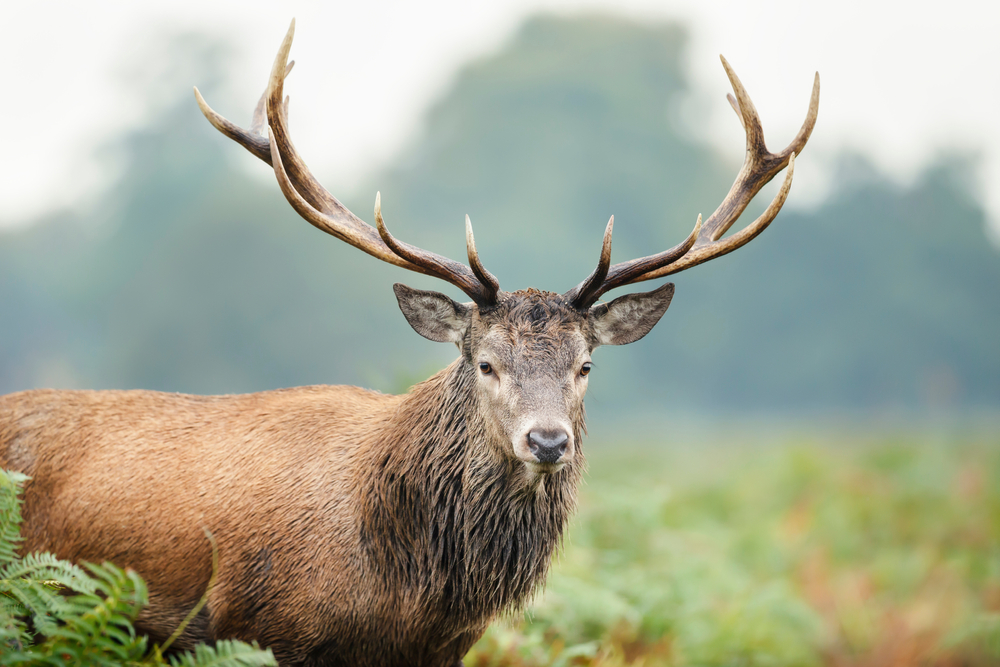Antlers are like giant, imposing cradles, sometimes stretching out from an animal’s head in a bowl-like shape with horns reaching for the sky.
And there is variation in horns and antlers among many animals. In a recent study published in Communications Biology, researchers found that ruminant headgear may have evolved from a common ancestor that lived 15 million years to 20 million years ago.
“There’s some sort of genetic predisposition that this family has towards ornamentation,” says Zachary Calamari, an evolutionary biologist at the City University of New York and the American Museum of Natural History.
Hoofed Mammals with Headgear
Ruminants are a group of even-toed hoofed mammals that are divided into six major groups. There are four with some sort of headgear, whether they are horns, antlers, ossicones for giraffes.
-
Bovids: Cows, bison, sheep, goats, and many ungulates in Africa
-
Deer: Moose, elk, and others
-
Pronghorn
-
Giraffes
In the recent study, Calamari and his colleague John Flynn, also at the American Museum of Natural History, examined the genomes of living ruminants. Until now, scientists weren’t sure if ruminants, like moose, cows, giraffes, and others, had all evolved headgear from one common ancestor millions of years ago, or if they had adapted these appendages independently, in parallel evolution.
Read More: Giant Claws and Outlandish Antlers? Thank the Sexual Arms Race
Comparing Genes for Horns and Antlers
The researchers closely looked at RNA since it would tell them which genes might be involved in the process of building horns or antlers. While it would be ideal to look at the RNA of fossil ruminants, RNA doesn’t preserve well.
So, Calamari and Flynn analyzed RNA samples from six young cows and compared their genomes to published results on the well-studied genomes of deer, and pigs, a relative of even-toed ruminants that don’t have headgear. They were interested in the early stages of development when the species typically start to grow horns. Comparison showed that the cow RNA had similarities to the deer RNA, and both lacked similarities to the pig RNA.
“We found that there are genes that are expressed in an analogous pattern,” Calamari says. “Some of these genes could be related to horn and antler formation.”
Read More: What’s the Purpose Behind Animal Weapons?
Horned Mammals May Have a Common Ancestor
The similar markers in RNA support the theory that there is a common ancestor for the various types of ruminants with headgear, rather than a parallel evolution in which groups developed these features independently.
Some of the genes also revealed that ruminants may form horns out of a group of embryonic cells that form the face and are found in all vertebrates.
While this research supports the theory that all horns evolved from a common ancestor, it’s unclear what that ancestor might have looked like. All headgear began to appear in ruminants about 15 million years to 20 million years ago in the Middle Miocene. But the fossil record is still incomplete — no such common ancestor has been defined yet.
Read More: Established Science Is Wrong About Mammalian Evolution, Study Claims
How Studying Antlers Could Benefit Bone Cancer Research
Calamari speculates that this common ancestor may have looked like a mouse deer, also known as a chevrotain, which comes from the Tragulidae family. These may have had small appendages on their head, or even small bumps.
The fact that all these living ruminants shared a common ancestor doesn’t mean that other relatives didn’t develop them in parallel, though. For example, mammals related to modern camels, which are not ruminants but even-toed ungulates, once had headgear, but most researchers believe they evolved separately, Calamari says.
Understanding horns is important because the genes responsible for such rapid bone growth — some ungulates like moose develop antlers in a few months and lose them quickly when mating season is over — could help bone cancer research.
Read More: 6 Unusual Traits of Animal Evolution
Article Sources
Our writers at Discovermagazine.com use peer-reviewed studies and high-quality sources for our articles, and our editors review for scientific accuracy and editorial standards. Review the sources used below for this article:
Joshua Rapp Learn is an award-winning D.C.-based science writer. An expat Albertan, he contributes to a number of science publications like National Geographic, The New York Times, The Guardian, New Scientist, Hakai, and others.











/https://tf-cmsv2-smithsonianmag-media.s3.amazonaws.com/filer_public/34/31/3431771d-41e2-4f97-aed2-c5f1df5295da/gettyimages-1441066266_web.jpg)








Discussion about this post